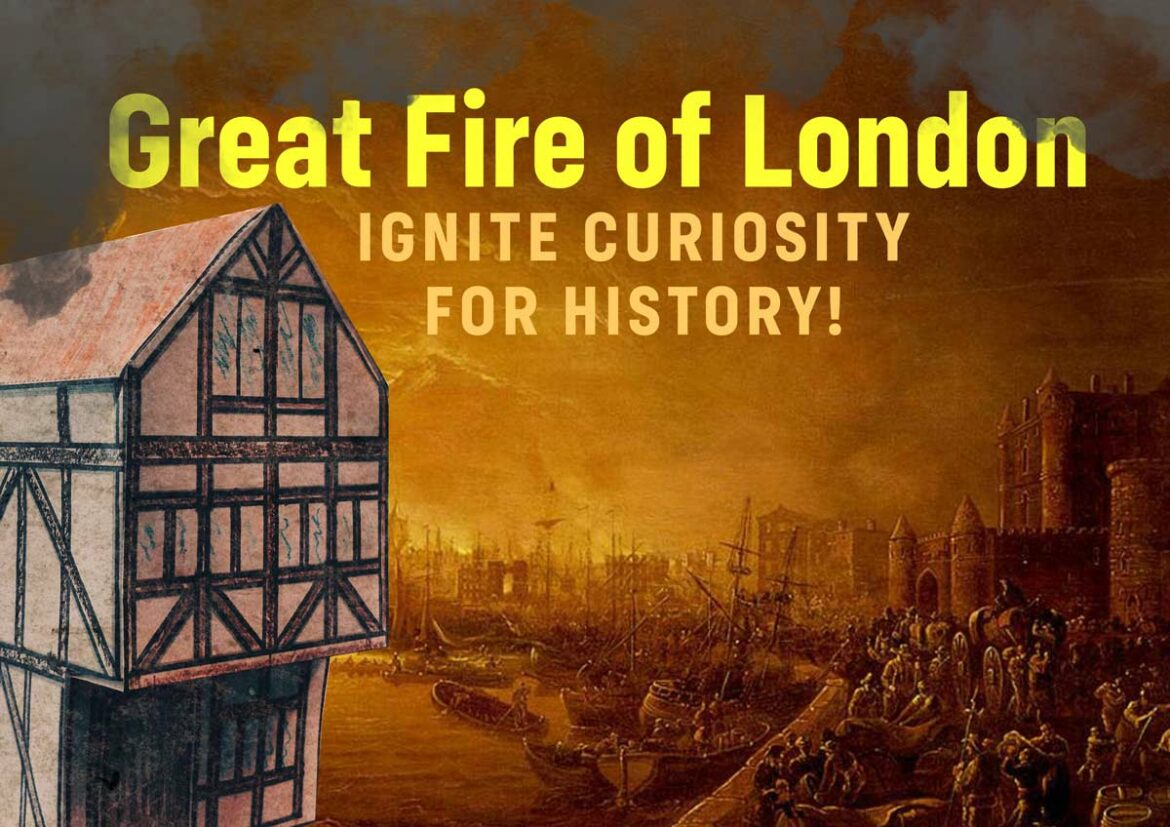In this blog post, we’ll show you how to create your very own Tudor House Model by printing out a template at home. Crafting a Tudor House Model isn’t just a fun and creative project; it’s also an excellent way to immerse yourself and your young learners in the historical backdrop of the Great Fire of London.
- Type: Tudor House DIY Template
- Key feature: Jetty with overhang
- Materials: A4 paper (any type), glue, crayons
- Tools: Printer, scissors
- Duration: Around 1 hour
- Price: £1.99



As we guide you through the crafting process, we’ll also explore the historical significance of Tudor-style buildings and their role in one of London’s most iconic events.
So, whether you’re a history enthusiast or just looking for an enjoyable family activity, dust off your printer, gather your crafting supplies, and get ready to journey back in time with our Tudor House Model project.
Instructions to print & make Tudor House Model at home:
Total Time: 1 hour
1. Download the Tudor house template

Download the Tudor House Template and open it on your computer or mobile phone. The file will contain a set of printable templates in PDF format.
2. Print out

Print out the templates on standard A4 sheets of paper. You can use any standard printer to print out the black-and-white version.
3. Cut out

Cut out the templates along the black lines using a pair of scissors. Be sure to cut carefully and accurately to ensure that your paper house fits together properly.
4. Fold

Fold along the dotted lines to create the tabs and creases needed to assemble the house. You can use a ruler or bone folder to make the creases more precise.
5. Glue

Apply glue to one section of the paper house at a time. A glue stick or white glue is recommended for best results. Be careful not to use too much glue, as this can cause the paper to wrinkle or become soggy.
6. Attach & Decorate

Attach two and two parts of the house, starting with the walls and then adding the roof. Begin by attaching the tabs on the walls together to create a box shape. Then attach the tabs on the roof to the corresponding tabs on the walls. Press the pieces together firmly to ensure that they are securely attached.
Once the glue has dried, you can add any additional decorations or details that you like. This could include painting the house with additional colours, adding texture with a sponge or brush, or even glueing on small accessories like window shutters or a chimney.
Estimated Cost: 1.99 GBP
Tools:
- Printer
- Scissors
Materials: Paper Glue Crayons
Tudor houses with these distinctive jetties, while architecturally charming, played a pivotal role in the rapid spread of the Great Fire of London in 1666. These overhanging structures created narrow passageways between buildings, often referred to as “fire alleys.” When the fire broke out, these alleys acted as channels for the flames, allowing them to leap from house to house with astonishing speed.

